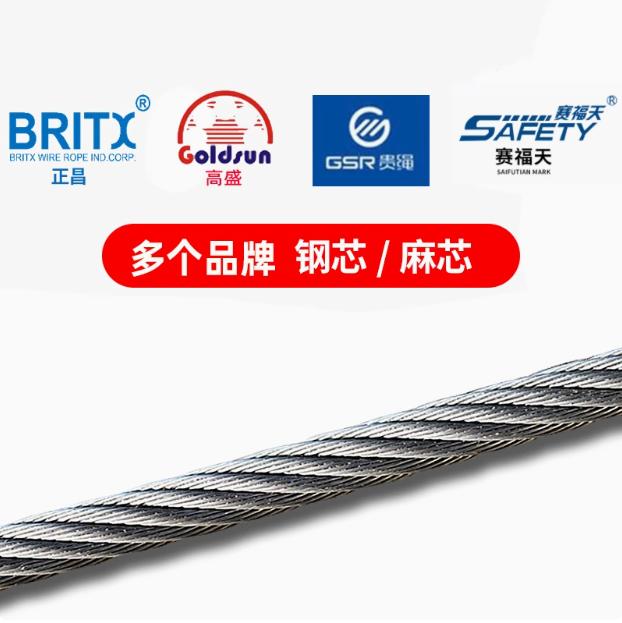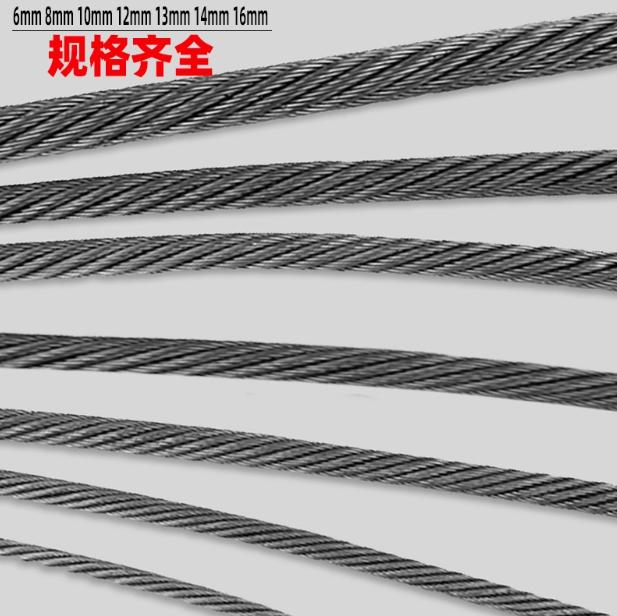The universal elevator specific steel wire rope is a key component in the elevator system. The following is a detailed introduction to it:
1、 Structure and Composition
The elevator steel wire rope is composed of rope strands, rope strand steel wires, and rope cores, which are twisted in a spiral shape around the rope core with a single rope strand. The core of the rope is usually made of oil soaked fibers, which are used to support and fix the position of the rope strands, improve the contact between the ropes, and serve as an oil storage tank to provide long-term lubrication for the steel wire rope.
2、 Type and Marking
Type: The commonly used elevator traction steel wire ropes include Xilu type (X-type) and Walingtun type (W-type). Domestic elevators commonly use Xilu style steel wire ropes with 8 or 6 steel strands, among which 8X (19) is more commonly used.
Marking recognition: Taking a passenger elevator with a rated load capacity of 1000kg as an example, the traction steel wire rope may be marked as 8X (19) -16-140 right turn. Among them, 8 is the number of rope strands, X represents the Xilu formula, (19) is the number of steel wires in each rope strand, 16 is the nominal diameter of the steel wire rope (mm), 140 is the tensile strength of the steel wire rope (kgf/mm ²), and the right cross represents the twisting direction of the steel wire in the rope strand and the rope strand in the rope.
3、 Characteristics and Performance
High strength: The elevator steel wire rope is made up of multiple high-strength steel wires wound together, with extremely high tensile strength and wear resistance.
Flexibility: Steel wire rope has good flexibility and can adapt to bending and stretching during elevator operation.
Wear resistance: The surface has been specially treated to have high wear resistance and corrosion resistance, extending its service life.
Safety: Steel wire rope is the foundation of safe operation of elevators, and its quality and maintenance directly affect the safety of passengers.
4、 Selection and maintenance
Selection: Choose the appropriate steel wire rope based on the elevator model, specifications, and local safety regulations. Pay attention to checking the marking, diameter, tensile strength and other parameters of the steel wire rope.
Maintenance:
Lubrication: The newly produced steel wire rope has undergone lubrication treatment during production, but the lubricating grease will be lost during use. Therefore, it is necessary to regularly add lubricating grease to the steel wire rope to reduce wear and extend its service life. Lubrication methods include soaking after disassembly, brushing, or using specialized lubrication equipment.
Inspection: Regularly inspect the wire rope for breakage, diameter changes, tension, lubrication, cleaning, and corrosion. When abnormalities are discovered, they should be dealt with promptly.
Scrap and replacement: According to relevant regulations and experience, when there are too many broken wires, excessive reduction in diameter, severe corrosion or internal wear of the steel wire rope, it should be scrapped and replaced with a new rope. When replacing, ensure that all steel wire ropes in the same group are replaced together.
5、 Safety factor and standards
The safety factor of elevator wire rope refers to the ratio between the minimum breaking load of a wire rope and the maximum force it experiences when a car with a rated load stops at the lowest level. According to standards such as GB7588, the safety factor of traction steel wire rope has different requirements in different situations. For example, elevators that use three or more traction steel wire ropes have a safety factor of 12; The elevator using two traction steel wire ropes has a safety factor of 16.
In summary, elevator specific steel wire ropes play a crucial role in elevator systems. Understanding its structure and composition, types and markings, characteristics and performance, as well as selection and maintenance, is of great significance for ensuring the safe operation of elevators.








 Sweep WeChat yards pay attention to us
Sweep WeChat yards pay attention to us
